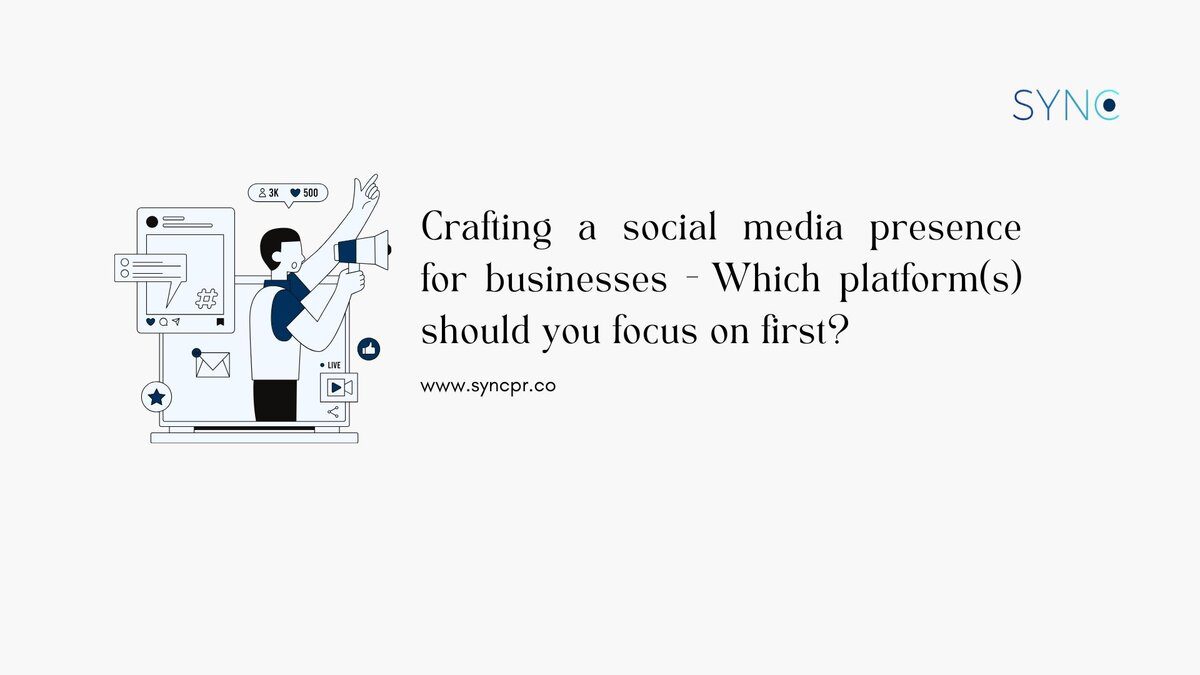In 2023, We Are Social reported 5.08 million active social media users in Singapore, a staggering 84.7% of the population. With most Singaporean consumers owning at least one social media account, social media platforms present a valuable opportunity for businesses to strengthen their affinity with their audience and maintain competitiveness.
There is a vast array of social media platforms for businesses to explore, each offering unique features and audiences, so many business owners may feel overwhelmed wondering, “Which platform(s) is/are the best for me to launch my brand?”
What platforms are there, and what are they good for?
We will dive into understanding Singapore’s top social media platforms that are good for businesses to brand themselves: Facebook, Instagram, TikTok, LinkedIn, and X (formerly Twitter). This guide touches on each platform’s advantages and disadvantages so that businesses can make informed decisions to optimise their social media marketing efforts and brand-building strategy.
Facebook: The social media giant
Facebook boasts a vast and diverse user base, with over 5.1 million Singaporeans on Facebook as of February 2023 across all age groups, making it an attractive platform for businesses aiming to connect with a wide audience. Facebook is an ideal choice for businesses looking to effectively promote their products and/or services, due to the platform’s precise targeting and extensive reach.
However, businesses should be aware that Facebook’s algorithms are frequently changing, which in turn impacts the brand’s visibility and engagement – for better or worse. To navigate this, businesses looking to launch their brand on Facebook ought to conduct regular, thorough audience analysis and develop targeted paid advertising campaigns for optimal results.
Instagram: The visual storytelling platform
Instagram provides businesses with a wide array of content formats like posts, stories, and reels, contributing to the overall appeal as a platform for brand engagement and growth. Its emphasis is on visual storytelling, which would be best suited for businesses looking to showcase their products and/or services creatively. Bear in mind that Instagram would be ideal for businesses that are looking to foster organic engagements with a younger demographic.
Considering that Instagram is a visual platform, the landscape is highly competitive and saturated alongside other businesses in the space. Despite these hurdles, businesses can navigate them by crafting an effective Instagram content strategy through compelling brand narratives, influencer marketing and relevant hashtags.
TikTok: Where short-form creativity flourishes
TikTok has become a popular platform among younger audiences due to its focus on short-form content. If a business is looking to target such a demographic, TikTok is definitely an attractive option to target and engage them. Furthermore, TikTok added text posts to its existing content offerings in mid-2023, which enables businesses to share announcements, promotions, product updates, and even storytell the brand, all within the platform’s video-focused environment.
However, succeeding on TikTok necessitates a unique approach, and its advertising options may be limited. To enhance brand visibility and resonance, businesses can embrace creativity through curating viral content and collaborating with influencers.
In short, TikTok is best suited for businesses that want to showcase creativity and engage with a younger, trend-focused audience.
LinkedIn: The professional networking tool
LinkedIn serves as a cornerstone for professional networking, offering businesses unique opportunities to establish themselves as industry leaders and target potential clients. Unlike other social media platforms, LinkedIn’s unique selling proposition as a social media platform centres on professional lead generation and thought leadership. Businesses that publish content formats such as industry news, company updates, or whitepapers, can leverage LinkedIn’s platform and position themselves as credible voices of authority within their field.
However, do take note that LinkedIn may experience slower engagement compared to more consumer-focused platforms, due to the nature of its users. Regardless of this, businesses would need to curate a professional content strategy that is highly targeted and regularly share updates to stay relevant and on the top of their audience’s minds.
X: For bite-sized, real-time engagement
X is a powerful platform that offers businesses a unique opportunity to engage with their audience in real-time. This means that businesses can interact with their customers immediately and reach a broad audience through retweets. This focus on timely updates enables businesses to stay current with the latest trends and participate in ongoing conversations, enhancing their brand visibility and fostering community engagement.
However, X’s character limit for messages and fast-paced nature can pose challenges for conveying comprehensive messages. To overcome these hurdles, businesses can take advantage of X’s dynamic environment through the use of hashtags and trends to further amplify brand awareness, enabling them to join relevant discussions and increase their visibility. By crafting content that is both engaging and informative, businesses can keep their audience informed and entertained, while also building brand loyalty.
Which social media platform is the best for my business?
When determining the right social media platforms to promote their brand, businesses should consider several crucial factors to ensure their strategy aligns with their goals and target audience.
We’ve gone ahead and listed some key questions to consider below:
- Are the top social media marketing goals aligned with the business goals?
The first step is to understand why the business needs an online presence, as different platforms are better suited to different social media marketing strategies. If it is increasing brand awareness and engaging with the audience, Instagram or TikTok would be best, while boosting sales and providing customer support would be better with a Facebook page. - What types of content does the business intend to share?
There are 5 types of social media content: text, image, video, audio, and live content. Businesses must consider the existing content in their media library, or plan the content types they wish to push out. For example, visually-oriented businesses may thrive on platforms like Instagram, while businesses focused on news or industry insights may find success on platforms like X or LinkedIn. - What channels are the target audience using?
Businesses must research and understand the audience’s preferred social media platforms, because nothing matters if a business is on a platform where the target audience is not. By understanding where their audience spends time online, businesses can focus their efforts on platforms that offer the greatest potential for reaching and engaging with their target demographic effectively. - What platforms are competitors on, and what content is being shared?
It is very useful to conduct a comprehensive analysis on competitors’ existing social media marketing efforts. Such research provides insight on the platform’s effectiveness, assesses what is doing well, and highlights potential opportunities. As a result, businesses are better informed about which social media platforms to prioritise, and optimise their social media strategy in order to stand out among the competition.
If you want to understand how social media can drive your brand’s growth, check out our Social Media for PR Guide eBook, free for download here. Alternatively, if you wish to optimise your social media presence or learn more about how PR can add value to your brand, drop us an email at hello(a)syncpr.co.


